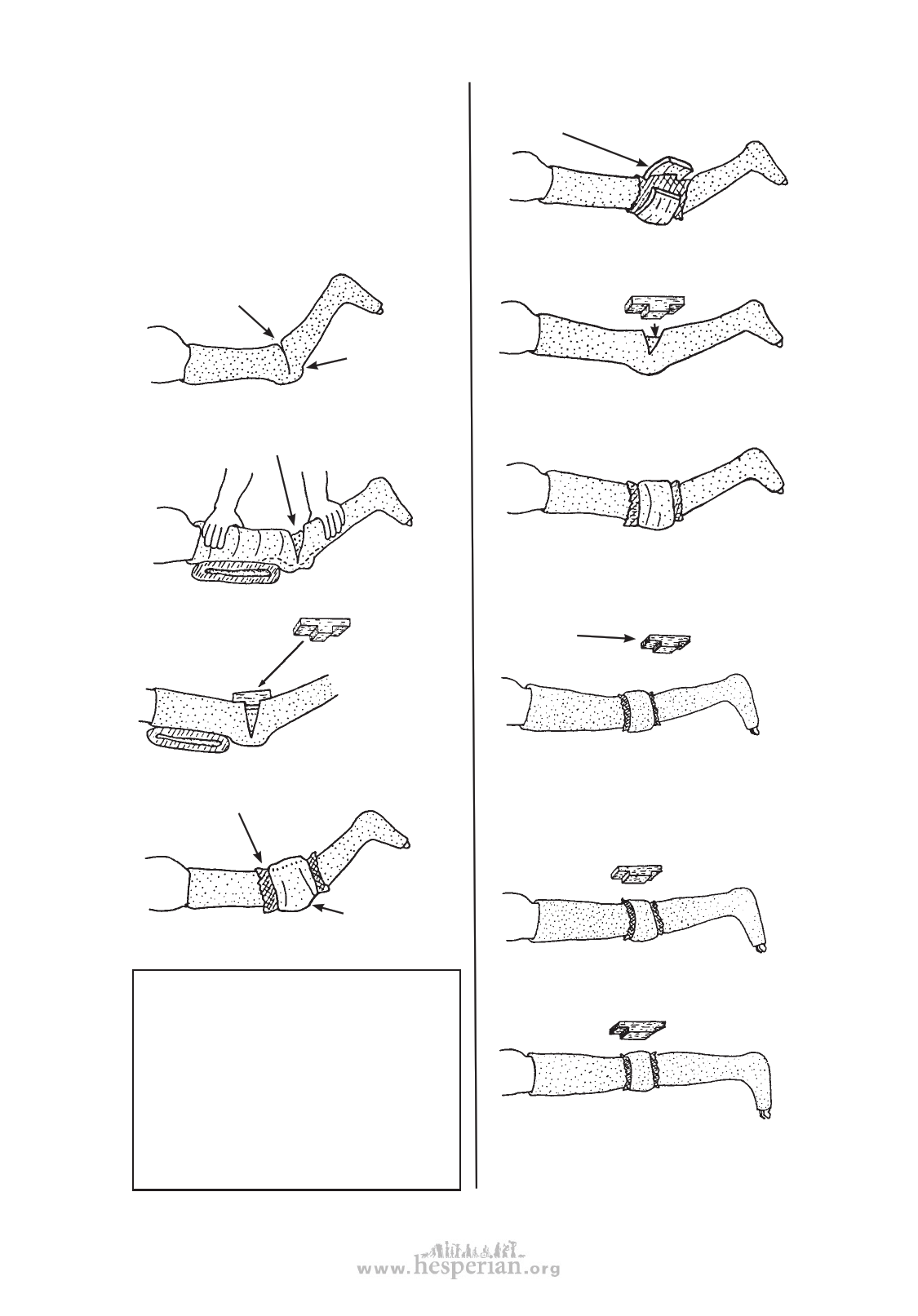
STRAIGHTENING THE CAST
WITH WEDGES
The cast is straightened a little every few
days. In a small child or a person with recent
contractures, it can be done every 2 or 3 days.
In persons with old contractures, progress will
be slower. To save on costs, change the cast
every week or 10 days.
SECOND WEEK
1. Cut through the plaster
behind the knee.
CORRECTING JOINT CONTRACTURES
THIRD WEEK
1. Cut and remove the ring
of plaster .
561
2. Gently stretch the joint and
put in a wider wedge.
Do not cut all
the way around.
2. Use steady, gentle pressure so that
the leg straightens a little and the
cut opens.
3. And cover it with a new
ring or plaster.
3. Hold the cut open
with a small wedge
of wood.
FOURTH WEEK
Each time you change
the ring, put in a
bigger wedge.
4. Wrap a piece of cloth
around the knee.
FIFTH WEEK
Continue casting until the knee is completely straight
or bends backward just a little. Then use a brace for
at least a few weeks (day and night) to keep it straight.
Then wrap a thin
ring of plaster
around it to keep
the wedge in place.
CAUTION: When streching the leg, use gentle, steady
pressure until it begins to hurt a little. Do not try to
advance too fast, as you may cause permanent
damage to nerves, tendons, or the joint.
For a day or so after stretching, the child may have
some discomfort behind the knee. This is normal,
unless it hurts too much. You can give aspirin. If the
child complains of pain over pressure points or bony
bumps, remove the cast or cut open a window in the
cast to check if a sore is forming.
WARNING: When casting a child who does not feel
in his limbs, take great caution to avoid pressure
sores, and use very little pressure.
SIXTH WEEK
The time to straighten a contracture may vary
between 2 weeks and 6 months—or more. If the leg
stops straightening for 3 or more cast changes, stop
casting and try to arrange surgery.
disabled village children